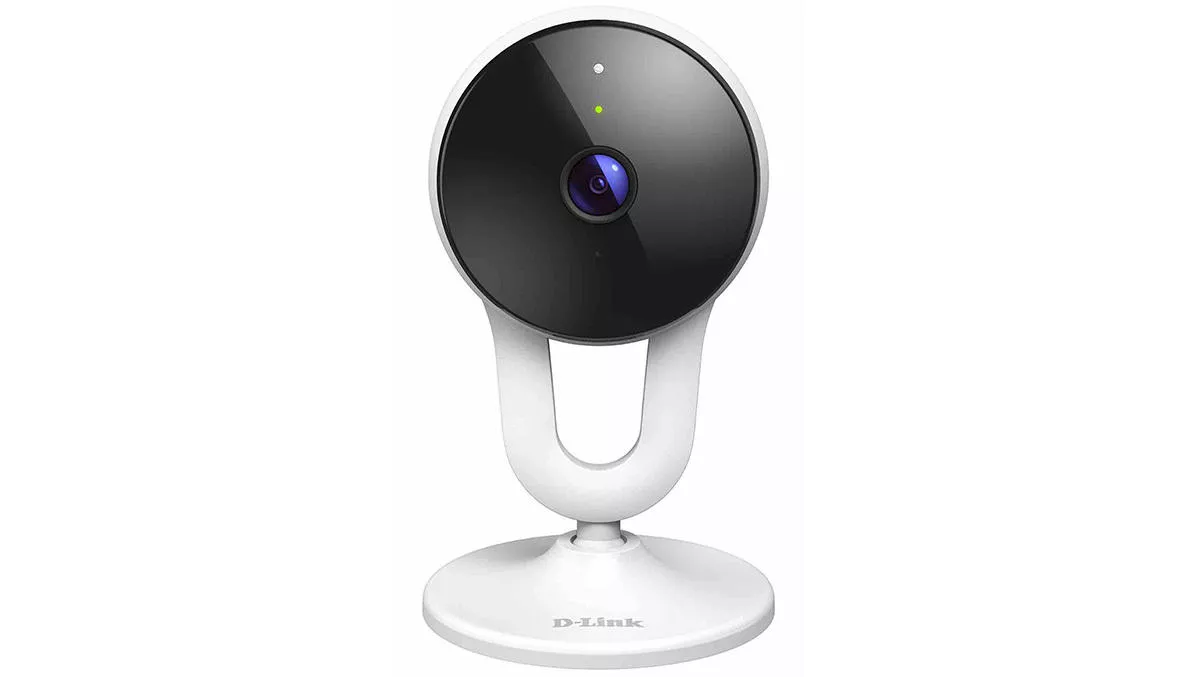
Hands-on review: D-Link Full HD Wi-Fi Camera
With the DCS-8300LHV2 Full HD Wi-Fi Camera, D-Link further expands its home security ecosystem. D-Link's cameras continue to get smaller, smarter, and easier to use.
The first thing that struck me was how small the camera was. It's a good 25% smaller than D-Link's other HD cameras. This is a plus point if you want just place it on a shelf, where it looks quite discrete. The camera swivels with a ball joint that enables the camera to be mounted on a wall. The bottom of the base twists off, to be mounted via two screw holes and the camera twisted back on. It's a neat fixing that requires no additional bits and pieces as all the screws a wall plugs are included.
The camera is powered via a mini-USB port on the back. You are not going to be able to hide the cable, unfortunately. There's also a socket for a MicroSD card, for storing video footage.
The camera has a built-in speaker and microphone. This enables two-way communication via the mydlink app. The microphone is also used to detect sound.
As with all D-Link's home automation and security produces, the camera's features are accessed via D-Link's mydlink app. If you have other devices and cameras in your home, they can all be accessed via this one app. The app also allows users to set up scheduling and trigger responses. The app is easy-to-use, with the optional more complex functions available as required.

The camera can be set to record to the D-Link cloud service, the basic plan of which is offered free with longer video retention times and support for multiple cameras requiring a paid plan. As well as the mydlink app, the camera also supports local recording via Onvif compatible NAS/NVR storage devices.
The mydlink app is supported by both Google Assistant and Amazon Alexa. Owners of an Amazon Echo Show can access the camera view (and that of any other D-Link cameras) from the device.
The camera can record up to 1920x1080 resolution at 30 frames per second. With a field of view of 120-degrees, I could see all of each room that I tested the camera in. Mounting the camera high up grants the optimum viewing angle, but this requires some thought to accommodate the power cable.
Whilst the camera does automatically switch to infra-red in low-light situations, the night vision is restricted to 5m (practically more like 3-4m). So if you want to monitor an entrance at night, the camera will need to be positioned with the night vision distance in mind.
The package comes with a D-Link window sticker and a quick installation guide. The guide has a copy of the QR code that the app uses to set the camera up. The same QR code (along with the camera's mac address and PIN) can be found on the base of the camera.
For the most part, the installation simply requires downloading the mydlink app from the Google or Apple store, clicking "add device" and following the instructions. This was simply a case of scanning the QR code and selecting my home network. After a firmware update, the camera was operational.
You can rename the camera in the app to something more memorable. You can also set the part of the camera's view for the mydink app to monitor for triggering actions. If you've mounted the camera from the ceiling, you can also invert the picture, accordingly.
The D-Link Full HD Wi-Fi Camera is an easy-to-setup, entry-level security device. Whilst simple to use, it is still a fully-featured networked security camera, perfect for keeping an eye on your property and possessions.


